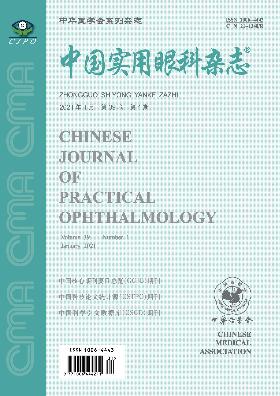78例下小管撕裂伤内切端修复术的体会
引用次数: 0
摘要
目的总结上小管探查在修复下小管撕裂伤内侧切端中的适用性。方法对78例下小管撕裂伤患者行双小管硅胶插管修复。上小管探查用于定位下小管撕裂伤的内侧切端。手术时间30 ~ 60分钟。硅胶管放置于泪道3个月。术后随访6 ~ 12个月,评估手术成功率及并发症。结果所有患者均修复成功,其中75例患者泪道完全自由重建。结论上小管探入技术修复下小管内侧切端手术时间短,成功率高,效果好,并发症少,是一种有效的方法。关键词:下小管撕裂伤;快速修复;泪探查辅助本文章由计算机程序翻译,如有差异,请以英文原文为准。
Experience of 78 cases undergone medial cut end repair of lower canalicular lacerations
Objective
To summarize the suitability of upper canalicular probing in repairing medial cut end of lower canalicular lacerations.
Methods
Seventy-eight patients with lower canalicular lacerations underwent canalicular laceration repair with bicanalicular silicone intubation. Upper canalic-ular probing was introduced for locating the medial cut end of lower canalicular lacerations. The length of operation time was 30 to 60 minutes. The silicone tubes were kept in the lacrimal passage for 3 months. Postoperative follow up ranged from 6-12 months, evaluating the success rate and complications.
Results
All patients were repaired successfully, of which the total free lacrimal passage reconstruction was achieved in 75 patients.
Conclusions
The upper canalicular probing technique is useful in repairing medial cut end of lower canalicular because of its shorter operation time, higher success rate, better effect and less complications.
Key words:
Lower canalicular laceration; Rapid repair; Lacrimal probe assistance
求助全文
通过发布文献求助,成功后即可免费获取论文全文。
去求助
来源期刊
自引率
0.00%
发文量
9101
期刊介绍:
China Practical Ophthalmology was founded in May 1983. It is supervised by the National Health Commission of the People's Republic of China, sponsored by the Chinese Medical Association and China Medical University, and publicly distributed at home and abroad. It is a national-level excellent core academic journal of comprehensive ophthalmology and a series of journals of the Chinese Medical Association.
China Practical Ophthalmology aims to guide and improve the theoretical level and actual clinical diagnosis and treatment ability of frontline ophthalmologists in my country. It is characterized by close integration with clinical practice, and timely publishes academic articles and scientific research results with high practical value to clinicians, so that readers can understand and use them, improve the theoretical level and diagnosis and treatment ability of ophthalmologists, help and support their innovative development, and is deeply welcomed and loved by ophthalmologists and readers.

 求助内容:
求助内容: 应助结果提醒方式:
应助结果提醒方式:


